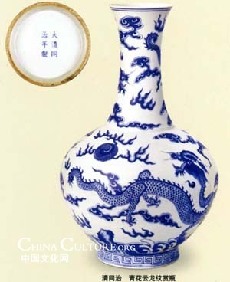Palace Museum Opens Its New Porcelain Hall
Updated: 2009-02-16 17:12
|
|||||||||||
|
|
This new porcelain hall offers a modern exhibition space to display the Palace Museum's 350,000 pieces of ceramic collection and more than 30,000 ceramic fragment samples collected from 150 ancient kiln sites all over the country The 427 pieces or sets of porcelain exhibits on display are mostly shown to public for the first time, covering almost all the important types of Chinese ceramics and porcelain, such as blue-and-white tripod burners with Persian inscriptions from the Ming Dynasty, blue-and-white porcelains from the Yuan Dynasty and porcelains from imperial kilns from the Ming Dynasty, These porcelain exhibits review, in an all-round manner, the history of Chinese porcelain dating back from the Neolithic Age 8,000 years ago all the way down to the end of the Qing Dynasty in the early 20th century Many of them have never been shown to public, for example, Qing palace collections made in imperial kilns during Hongwu years of the Ming Dynasty, porcelains from the leftover period of the Ming Dynasty 1 7th-century porcelains as an independent category imperial kiln porcelains of the late Qing Dynasty as an independent category and many stele rubbings from the ancestral master of porcelain, The ancestral master of porcelain is respected as the kiln deity and ancient ceramic makers usually offered worship to him before baking ceramics, The Palace Museum's collection of stele rubbings pertaining to the kiln deity from Shanxi, Shaanxi and Henan are of great importance to the study of Chinese ceramic history.
|
|
While keeping its original appearance, the architect made witty renovations to highlight the exhibition theme in this spectacular royal palace. The painted ceramic tiles paved during the early 20th century have been retained, striking a harmonious contrast with the painted ceiling and adding to elegance and dignity of the royal collection of porcelain.



